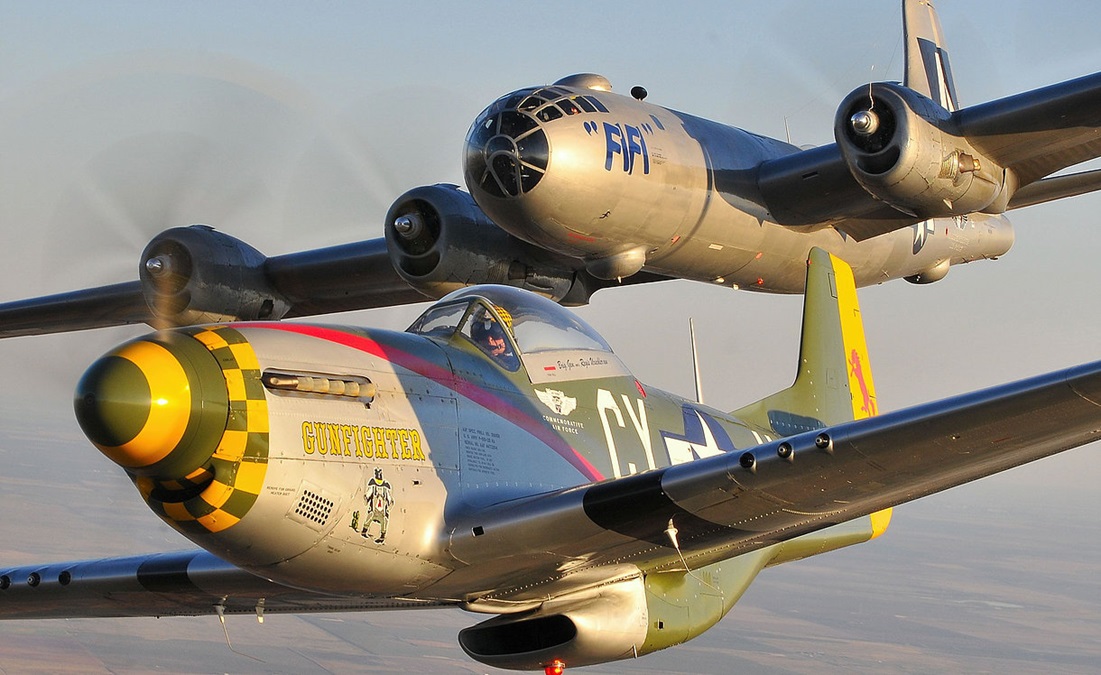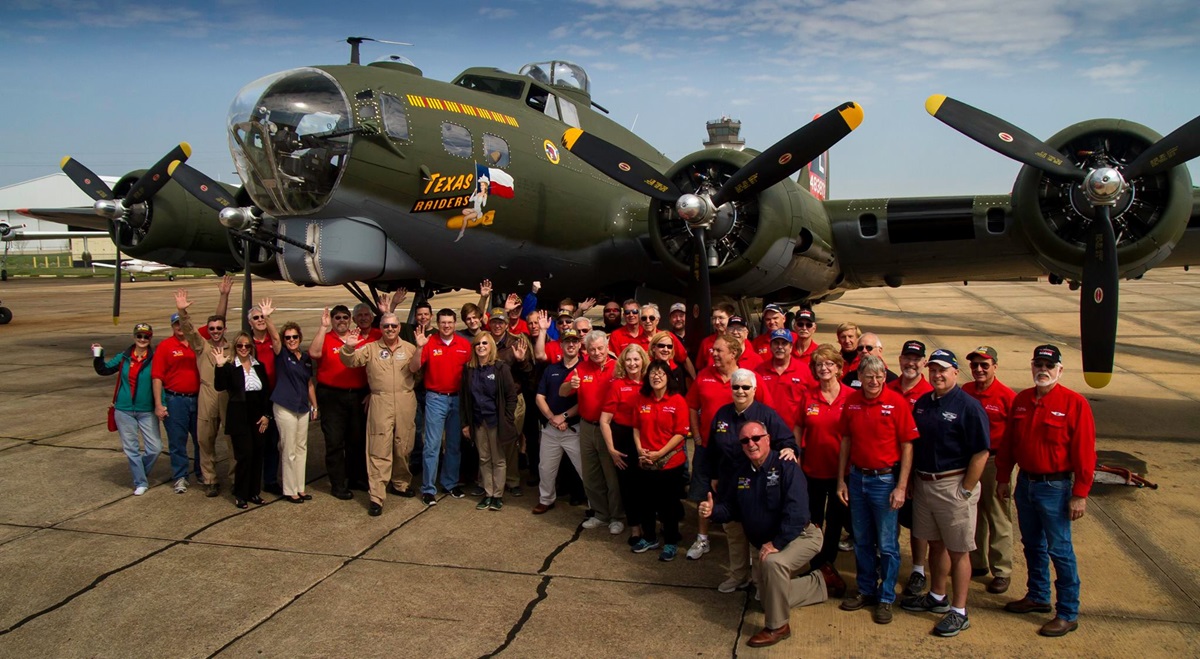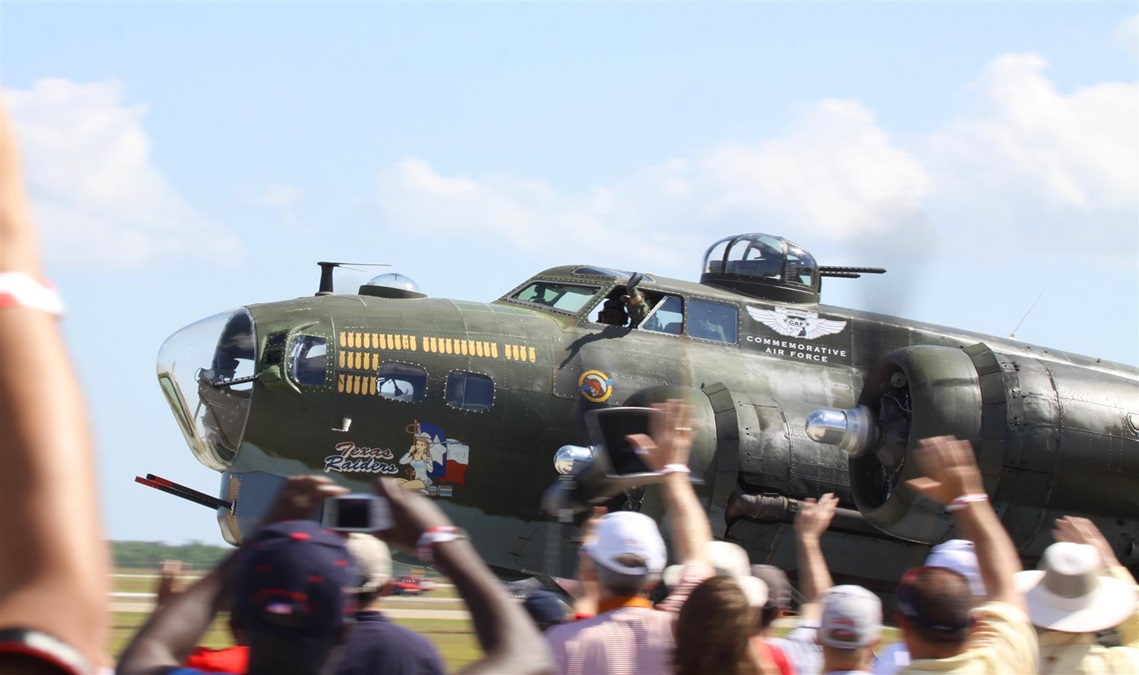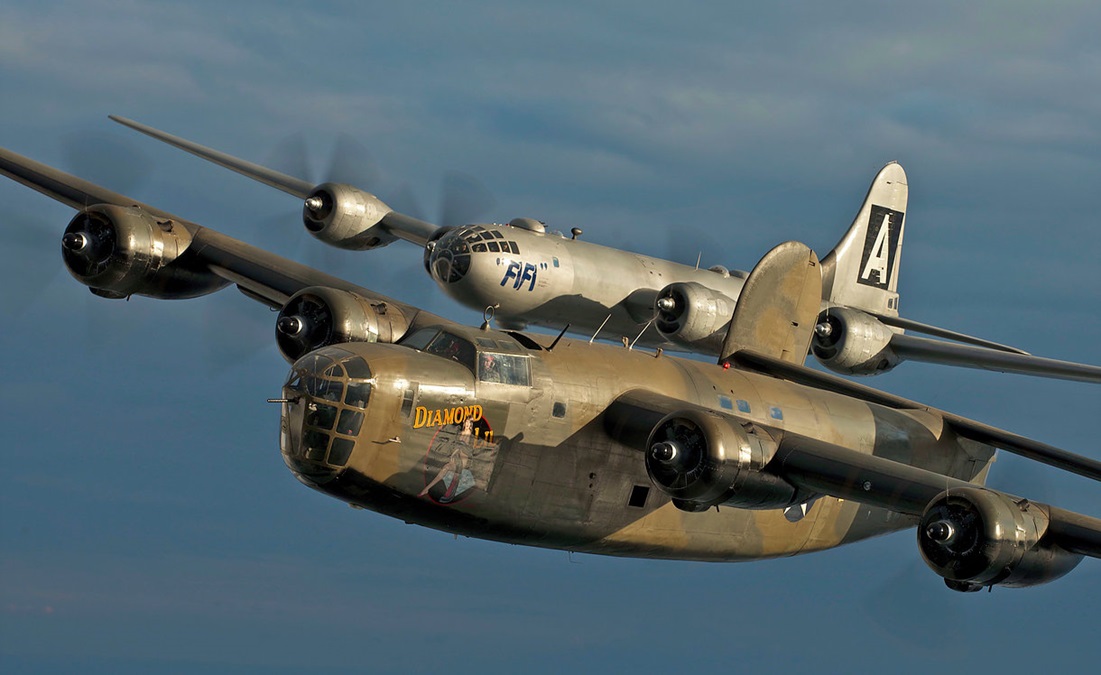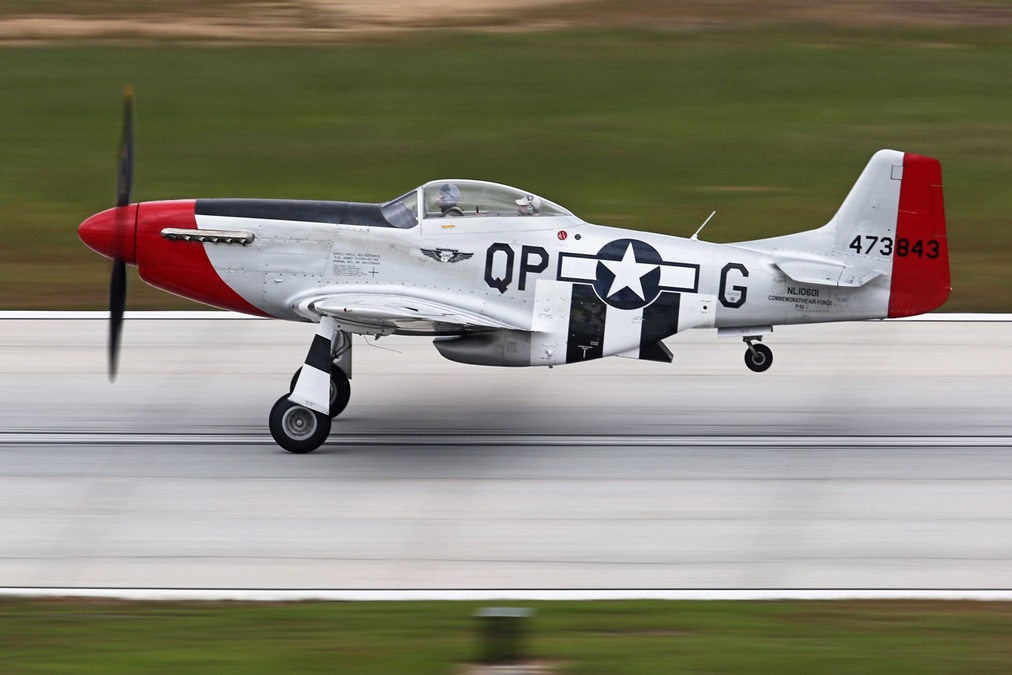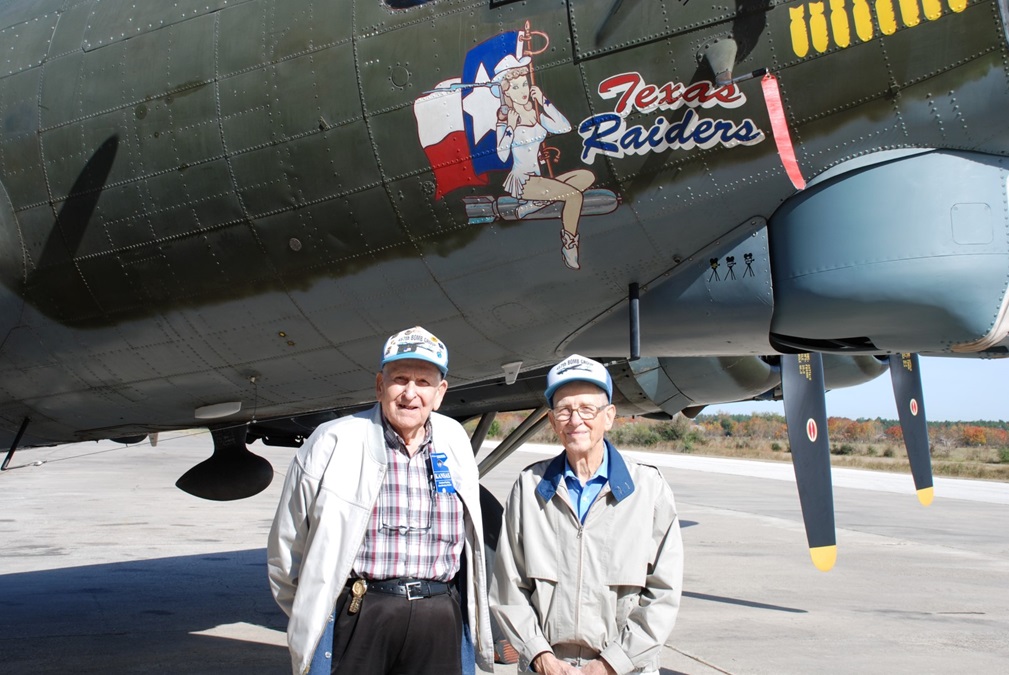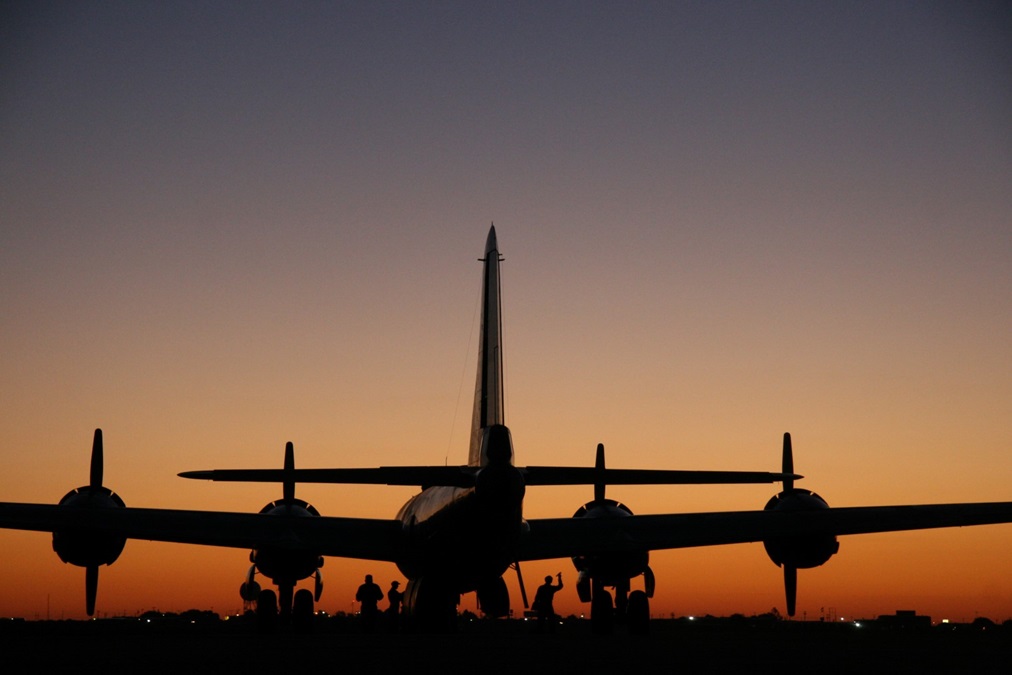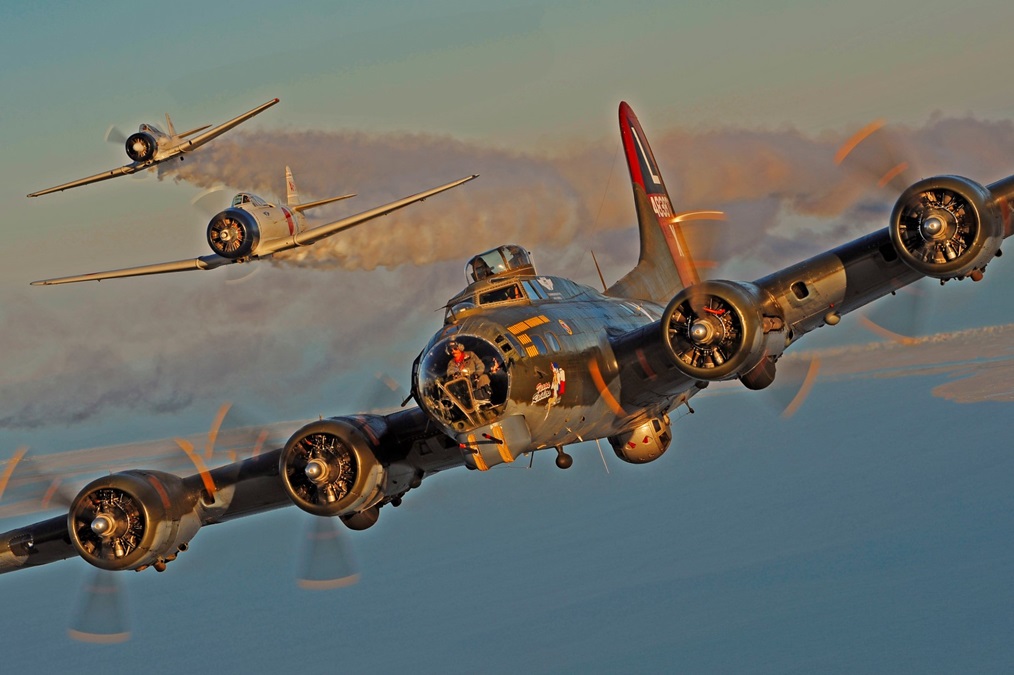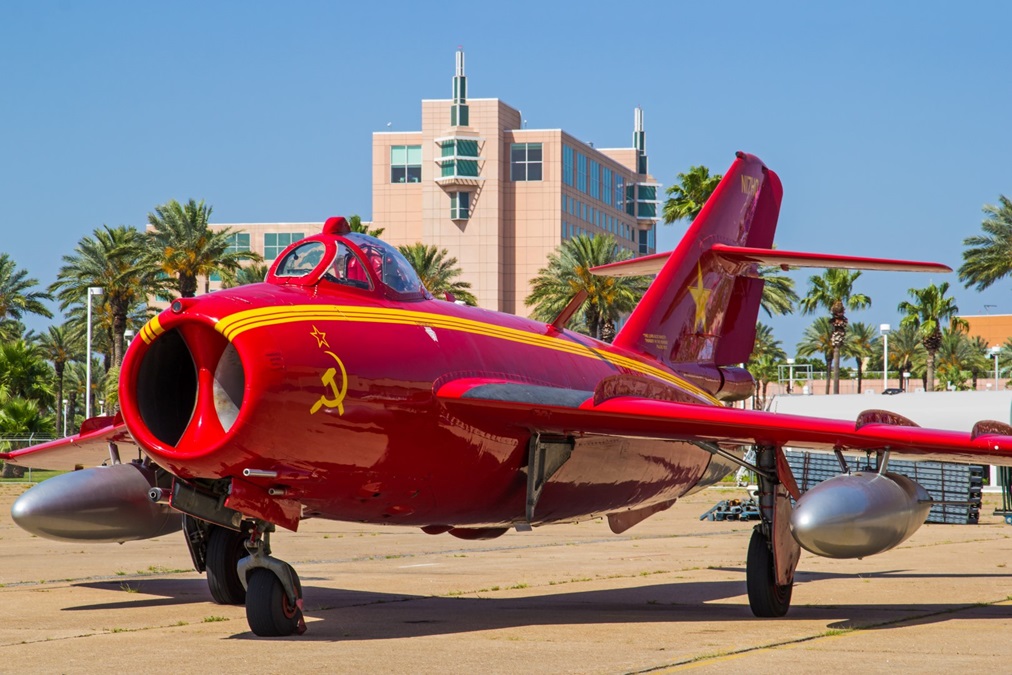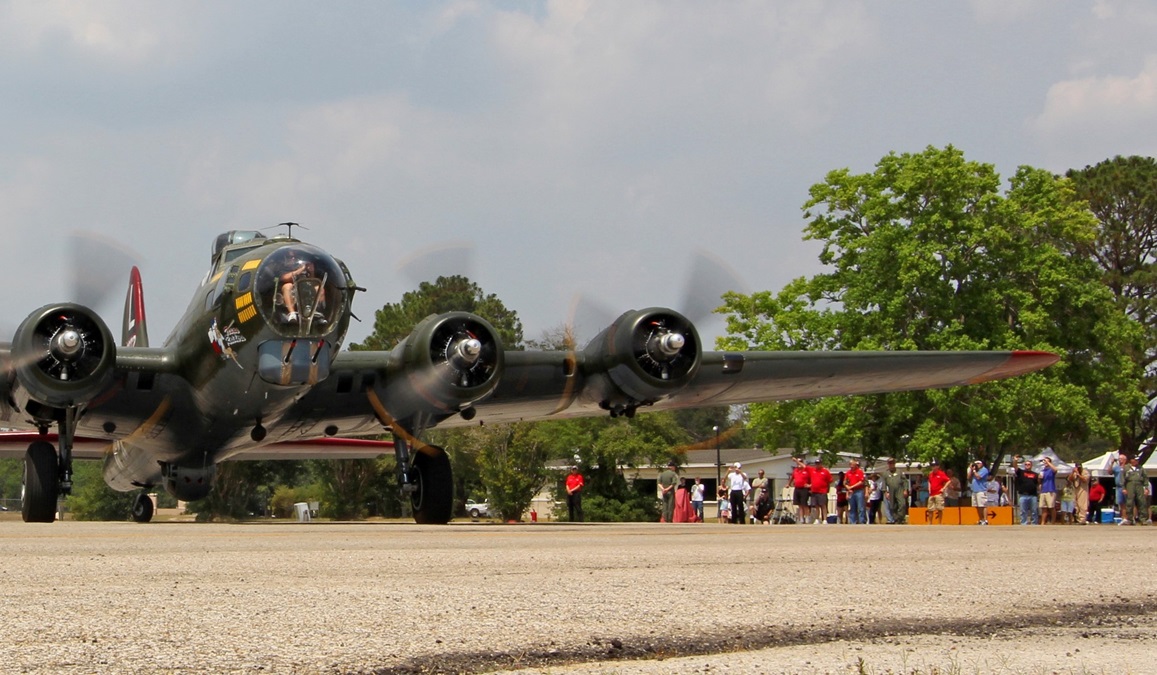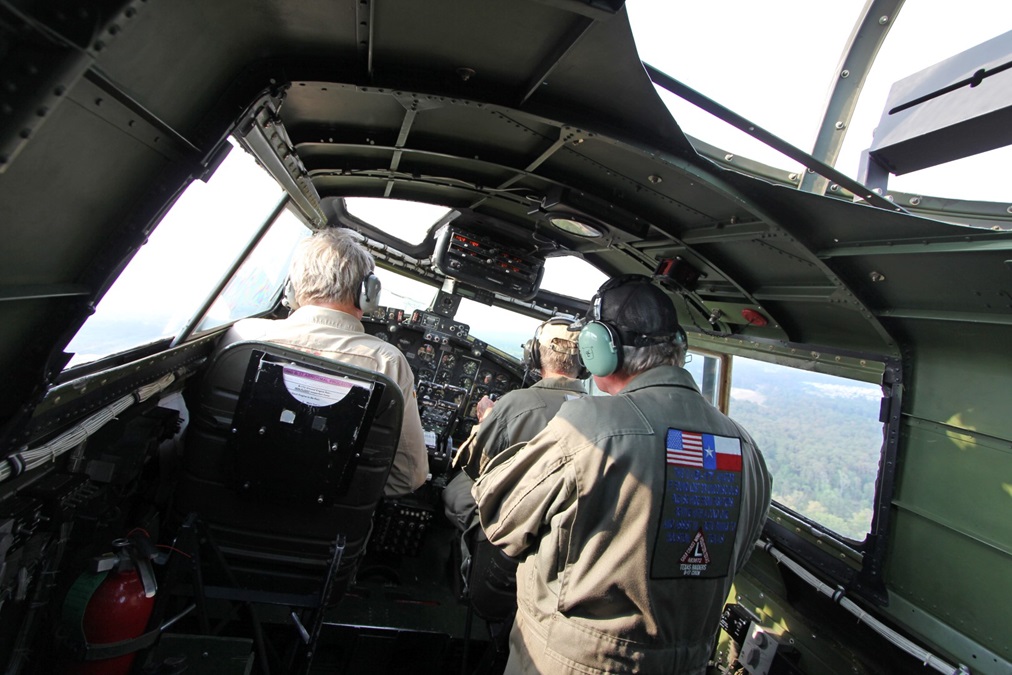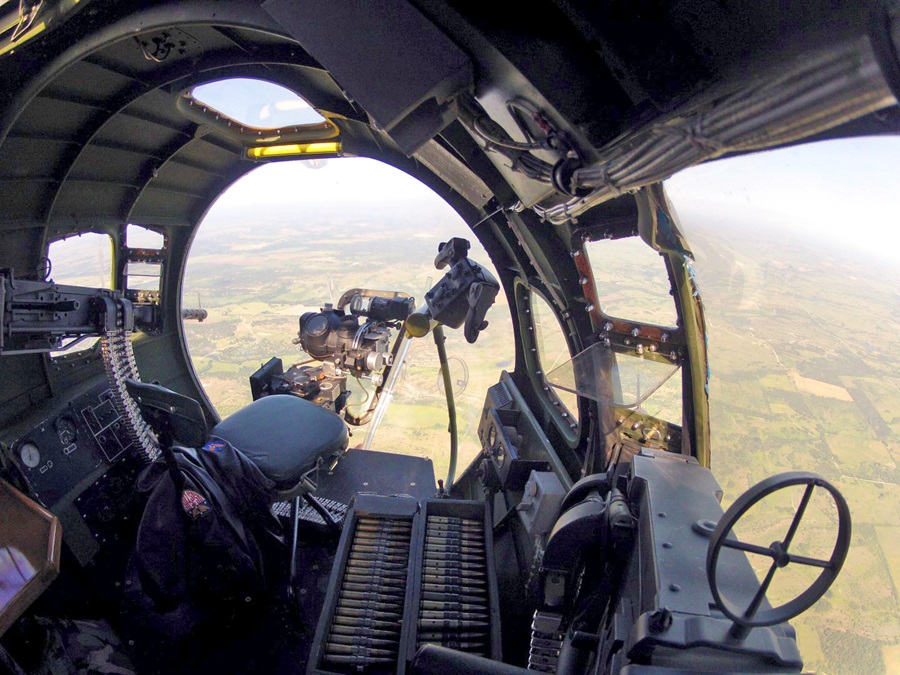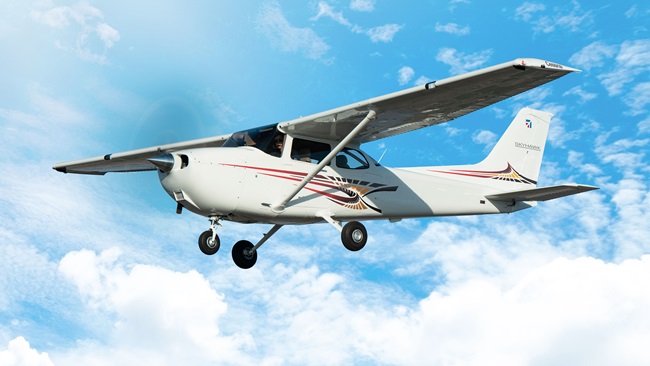Inspiring the American spirit
The Commemorative Air Force
Ladies and gentlemen, meet the Commemorative Air Force (CAF), the people and aircraft that preserve a key part of our heritage. Find out how to see these incredible warbirds and feel the rumble of their engines in your very bones. You can even ride in one!
The CAF got its start after 1957, when Lloyd Nolen and a small group of ex-service pilots in Texas pooled their money to buy the P–51 Mustang Red Nose. The group soon realized that very few World War II-era aircraft were left. Even though the United States had produced nearly 300,000 airplanes by the end of the war, nearly all of them were later decommissioned and then stripped or scrapped. The first CAF airshow was held in 1963, and as the years progressed, the group acquired more airplanes and more volunteers and donors to help the cause.
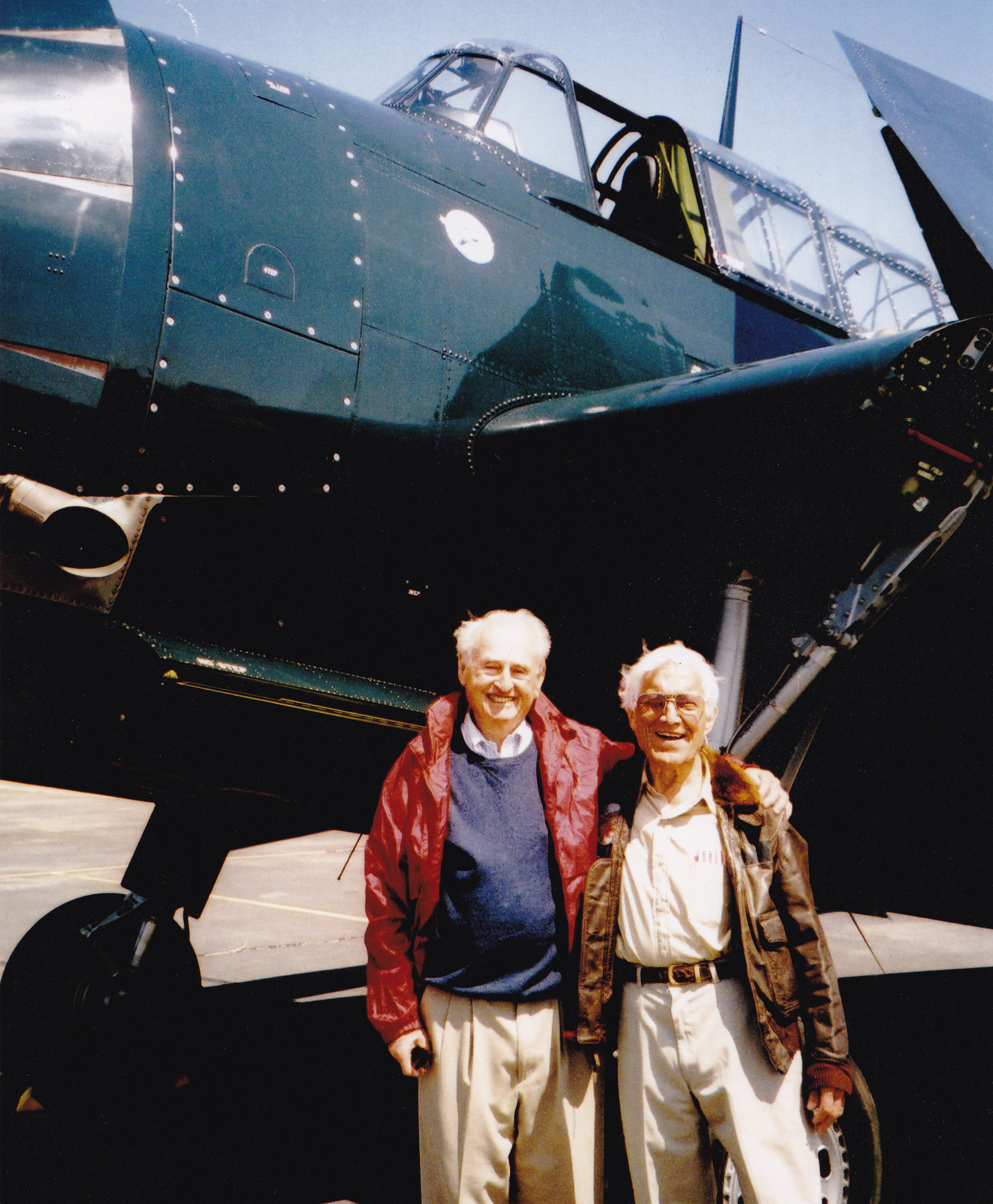
Units often schedule open house events when you can see the aircraft both up close on the ground (including inside) and watch them fly. Better yet, arrange to fly in one yourself and feel the rumble of those big engines! While you experience this thrill and imagine what it must have been like during the war, your fees will allow others to do the same. Most rides can be reserved online for a discount. The B–17 Sentimental Journey and B–25 Maid in the Shade both live at Airbase Arizona at Mesa’s Falcon Field. In summer, the aircraft visit airports farther north; Sentimental Journey made a tour of Idaho airports near my home a couple of years ago. Another favorite is the B–17 Texas Raiders; look for her all over the southern United States. Aerial tours generally last 20 to 25 minutes, but with engine run-up, taxi, shutdown, and disembarking times, the experience is usually about 45 minutes.
The CAF B–29/B–24 Squadron is based at Dallas Executive Airport. Each year these two aircraft, plus others, embark on an Air Power History Tour that makes some 30 stops across North America. As a former Los Angeles resident, I well recall each time this tour visited the CAF Southern California Wing in nearby Camarillo. The magnificent B–29 Fifi, accompanied by the equally rare B–24 Diamond Lil, would roar low over the city, prompting me to run outside and wave, jumping up and down, usually with tears streaming down my face. I’m sure thousands of others looked out their windows in amazement as the huge bombers lumbered overhead. A ride over the hills of southern California in the SoCal Wing’s P–51–D Mustang Man-O-War is definitely on my bucket list!
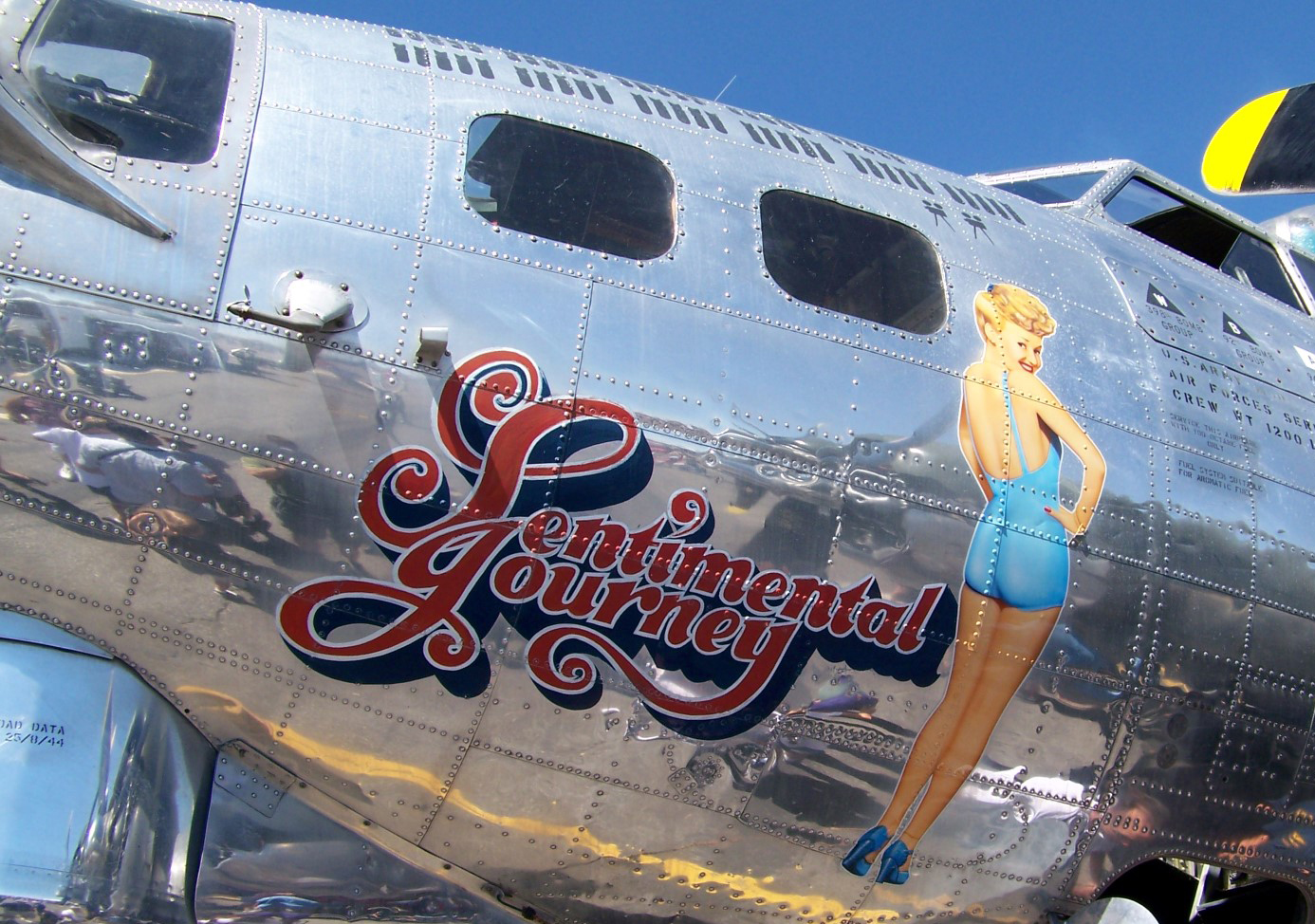
CAF aircraft perform in over 300 airshows per year, several of which are produced by the CAF itself. The biggest by far is simply called “AIRSHO” and is held annually at Midland International Air and Space Port in Midland-Odessa, Texas, and hosted by the CAF High Sky Wing. Most Ghost Squadron aircraft tend to fly most of their appearances relatively close to their home bases, but each year nearly half of all CAF aircraft fly in the AIRSHO. This makes AIRSHO the largest warbird airshow in the world. Other standout airshows include Wings Over Houston at Ellington Airport and the WWII Air, Sea and Land Festival (the Air Power Squadron will be there) at the New Orleans Lakefront Airport, home of the National WWII Museum. EAA AirVenture at Oshkosh always hosts CAF warbirds; in 2017 the CAF B–29 Fifi flew in formation with the newly restored B–29 Doc, an unforgettable sight.
This year, come see what hundreds of volunteer members and contributors have helped provide and maintain for all of us: an incredible squadron of beautifully preserved aircraft that will fly for and inspire generations to come. When you hear them roar overhead, you will give thanks to those of the Greatest Generation, reaffirming that their sacrifices were never made in vain.

Share your favorite destination in the AOPA Hangar: Places to fly, things to do, where to eat!


